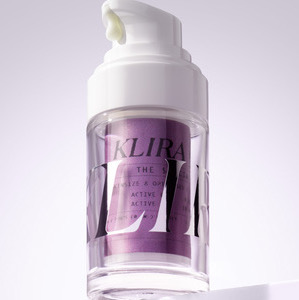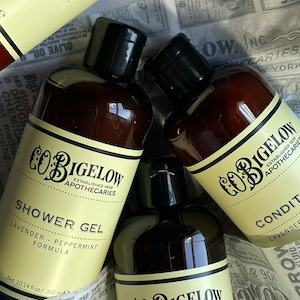Pure: The Skincare Dictionary
By Jo Phillips
The world of skincare is now so vast and confusing that unless you are an expert in this particular field, it is difficult to truly know what you are putting on your face. Indeed, the ingredient lists contain complex and long words such as “isobutylparaben”, without any explanation of their meaning.Therefore, to go with our big trials piece,we have created this list of ingredients and their signification to help you navigate through the wonderful world of modern beauty.
The most common and often included antioxidants are Vitamin E (often referred as d-alpha-tocopherol, tocopherol or tocotrienols), Vitamin C (often referred as ascorbyl palminate,l’ascorbic acid), Resveratrol (found in red grapes, red wine, blueberries, cranberries and different nuts), Retinol (Vitamin A) , Green tea (often referred as epigallocatechin-3 gallate).
AHA: alpha hydroxy acid is derived from various plant sources or from milk (lactic acid) and acts as a leave-on exfoliant. In general, our skin produces and sheds billions of skin cells throughout the day that build up on the skin’s surface leading to dullness, an uneven complexion, dry skin and clogged pores causing breakouts. Lactic acid gently exfoliates cells on the surface of skin by breaking down the material that holds skin cells together. An AHA is best for those who want to treat sun damaged skin due to its ability to exfoliate skin’s uppermost layers.
BHA: beta hydroxy acid, also known as salicylic acid, is not only an effective exfoliant (aka keratolytic) but also an anti-irritant and anti-inflammatory because it basically is a derivative of aspirin. Due to its antimicrobial properties, a BHA is best for treating acne, break-out prone skin and enlarged pores because it has the ability to penetrate into the pore lining and exfoliate inside the pore and therefore reduces the appearance of blackheads and whiteheads (deep-under-the- surface breakouts).
Research has shown that it can improve the skin’s thickness, barrier function, and stimulates healthy collagen production. Normal scrubs often have a rough texture which can threaten skin’s health when used too excessively (e.g. skin damage). Whereas scrubs only remove the skin’s superficial layer, leave- on exfoliants (AHA’s & BHA’s) go beyond what a normal manual scrub can do both AHA & BHA: gently exfoliate, help to reduce wrinkles by stimulating healthy collagen production which leads to firmer skin.
Cell-communicating ingredients: these kind of ingredients have the ability to literally ‘tell’ the skin cell to behave, act and consequently look like a young and healthy skin cell. They also stop other damaging cell-communicating substances from telling the skin cell to behave abnormally. Each cell in our body including skin cells must know how to perform correctly at the correct time in order to function properly and fulfilling their actual task. Well-known and common used cell-communicating ingredients are niacinamide (Vitamin B3), lecithin, linolenic acid, linoleic acid, retinol, retinaldehyde, retinoic acid, carnitine.
Emollients: are thickening agents that help preventing water loss and also have a soothing an softening effect on skin. To this category belong mineral oils, plant oils, shea and cocoa butter, fatty acids etc. (triglycerides, benzoates…)
Fatty acids: Fatty acids belong to the category of skin-identical ingredients / skin-repairing ingredients (definition – see below). Fatty acids are natural components of our skin and components of a complex mixture that create the outermost layer that protects the body against oxidative damage.These substances can be found in plant and animal lipids and are often used in cosmetics as emollients, thickening agents and also cleansing agents.
Glycolic Acid: It is used in AHA’s is able to weaken lipids’ binding properties that hold the dead skin cells together.
Hyaluronic Acid: is a skin-identical ingredient which helps to boost skin’s moisture content and to reduce the risk of moisture loss. It also helps in reducing inflammation.
Lactic Acid: It’s an AHA extracted from milk. Similar to Glycolic Acid, it has the ability to exfoliate cells that on the surface of the skin by breaking down the material that holds skin cells together. On top, it has great water-binding properties and, like glycolic acid (another AHA), can help to lighten skin discolorations and even out the skin tone.
PEG (polyethylene glycol): helps to keep products’ ingredients’ stable, performs functions similar to those of glycerin. Due to the fact that it can penetrate the skin, it also works as a vehicle that helps to deliver other ingredients deeper into skin.
Preservatives: help to keep products stable by preventing bacterial contamination and therefore, guarantee safety in cosmetics. Well-known preservatives in water-based skincare formulas are parabens such as methylparaben, butylparaben, ethylparaben, propylparaben and isobutylparaben.
Retinol (= entire vitamin A molecule): is a cell-communicating ingredient and an antioxidant. Due to its anti-aging properties, retinol helps skin cells create better, healthier skin cells, provides antioxidant support, and increases the amount of substances that enhance skin’s structural elements.
Skin-identical ingredients / Skin-repairing ingredients: naturally occurring in the human body, these are substances between skin cells that keep them connected and help to maintain skin’s fundamental structure. You can compare your skin to a house; your skin consisting of bricks, with the mortar (in this case, the skin-identical ingredients) being the material that holds these bricks together. An intact, stable, healthy, and strong mortar structure makes skin looking soft, healthy, smooth and supple. Especially sun damage, irritation, over cleansing and over scrubbing, a dry climate, the excessive use of air conditioning or indoor heaters as well as skin disorders in general threaten and weaken the skin’s ‘cement‘ and leads to skin’s break down, flakiness, water loss or an overall uncomfortable feeling. Glycerin, ceramides, elastin, hyaluronic acid, amino acids, sodium PCA, etc.
Silicones: While being derived from silica, silicones are slip agents which help the other ingredients in the skincare product to “steep” through. Silicones remain on the skin’s surface and that’s why they are majorly used in products that deal with wound healing and improving scars’ appearance. In general, Silicones lock in moisture by forming a barrier on the skin’s surface.
What should you look for in your skincare products?
1-Antioxidants
2-Cell-communicating ingredients
3-Skin-repairing ingredients
4-Broad-spectrum sun protection (for daytime usage)






